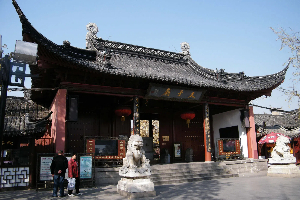The Journey to Nanjing: Exploring the Perfect Fusion of History and Nature
Nanjing, a cultural city nestled along the banks of the Yangtze River, stands as a testament to the harmonious coexistence between history and nature. As the capital of Jiangsu Province, it serves not only as a political and economic hub in eastern China but also as one of the crucial birthplaces of Chinese civilization. With its abundant historical relics and profound cultural heritage, Nanjing has become a bridge connecting the past and the present, drawing numerous tourists each year to trace the veins of history and admire the beauty of nature.
Nanjing's history dates back to the Three Kingdoms period in 229 AD, when the Eastern Wu Dynasty established its capital here, marking the beginning of Nanjing's history as an imperial city. Throughout the course of history, Nanjing has successively served as the capital of the Eastern Jin Dynasty and the Southern Dynasties, including the Song, Qi, Liang, and Chen. Each palace and segment of city wall seems to narrate the rise and fall of these dynasties. For history enthusiasts, Nanjing's landmarks such as the Ming Tombs, Sun Yat-sen Mausoleum, and Confucius Temple are all indispensable cultural sites.
Nanjing's natural landscapes and historical relics complement each other, creating a unique urban landscape. The boats gliding on the Qinhuai River, the bustling crowds in front of Confucius Temple, and the solemn atmosphere of the Sun Yat-sen Mausoleum—all these scenes are telling the stories of Nanjing. Every stone pathway and piece of gray tile in Nanjing carry the memories and warmth of this city. Wandering through the streets and alleys of Nanjing is like traveling through a time tunnel, where traces of history are everywhere and natural beauty is within reach. This perfect fusion of history and nature makes Nanjing a journey for both the soul and the body. Whether one is seeking historical culture or enjoying natural scenery, Nanjing can fulfill visitors’ expectations, making every exploration a memorable experience.
1、Visiting Sun Yat-sen Mausoleum
 The Sun Yat-sen Mausoleum
The Sun Yat-sen Mausoleum
The Sun Yat-sen Mausoleum, located at the southern foot of Mount Zijin, houses the tomb of Dr. Sun Yat-sen. It serves not only as a memorial to Dr. Sun but also as a testament to modern Chinese history. The mausoleum boasts a unique architectural style that blends Chinese and Western elements. The stone steps, archways, and memorial hall within the cemetery are all worth examining closely. As you stroll through the Sun Yat-sen Mausoleum, the first thing to catch your eye is the long stretch of stone steps, which symbolize not only the arduous journey of Dr. Sun’s life but also guide every visitor gently into the flow of history. Flanked by lush trees and filled with the sounds of birdsong, these steps add a touch of vitality and tranquility to this solemn and respectful cemetery.
2、Walking Through Confucius Temple
 The Confucius Temple
The Confucius Temple
Confucius Temple is the cultural hub of Nanjing and a symbol of China’s ancient imperial examination system. Here, you can admire the scenic views of the Qinhuai River and sample authentic Nanjing snacks such as duck blood and vermicelli soup and salted duck. The night view of Confucius Temple is particularly enchanting, with its vibrant lights and antique charm. As you walk through Confucius Temple, you'll first be drawn to the ancient building clusters. These well-preserved structures are filled with classical beauty, making you feel like you've traveled back to an era where scholars and poets gathered. Here, you can sense the richness of the ancient imperial examination culture and imagine the diligent study of scholars striving for fame and fortune.
3、Touring Ming Tombs
 The Ming Tombs
The Ming Tombs
The Ming Tombs, the mausoleum of Emperor Zhu Yuanzhang (the founder of the Ming Dynasty) and his empress, are located at the southern foot of Mount Zijin. The Stone Elephant Road, Sacred Way, and Mausoleum Palace here are representative of Ming Dynasty architecture, showcasing the exquisite artistry of ancient Chinese construction. As you step into Ming Tombs, the first thing to greet you is the Stone Elephant Road, known as the “Greatest Mausoleum Pathway Under Heaven.” Along the Stone Elephant Road, statues of various mythical creatures such as elephants, horses, and kylins are arranged in rows, lifelike and magnificent. These statues not only demonstrate the superb craftsmanship of Ming Dynasty artisans but also carry profound cultural symbolism and the supremacy of imperial power. Despite centuries of weathering, these stone artworks still retain their dignity and solemnity, inspiring awe for the wisdom and craftsmanship of ancient artisans.
4、ExploringNanjing Museum
 The Nanjing Museum
The Nanjing Museum
Nanjing Museum, one of China’s three major museums, houses a vast collection of precious artifacts, including bronze ware, jade, paintings, and calligraphy. It provides a deep dive into Chinese history and culture. Stepping into Nanjing Museum, you'll first be captivated by its magnificent architectural complex, which blends Chinese and Western styles, embodying the essence of traditional Chinese culture while retaining the modernity and grandeur of contemporary architecture. The museum’s internal layout is clear and well-organized, providing visitors with a comfortable and convenient exhibition environment.
5、Ascending Nanjing Yangtze River Bridge
 The Great Walll
The Great Walll
The Nanjing Yangtze River Bridge is China’s first domestically designed and constructed double-deck railway and highway bridge, symbolizing China’s engineering achievements. Standing on the bridge, you can overlook the magnificent scenery of the Yangtze River. As you stand atop the Nanjing Yangtze River Bridge, the first thing to strike you is its imposing bridge structure. The bridge spans the Yangtze River like a steel dragon, transforming a natural barrier into a thoroughfare. On the bridge deck, the railway and highway are separately layered to avoid interference, meeting the needs of different modes of transportation while ensuring smooth and safe traffic flow. Every detail of the bridge embodies the wisdom and hard work of its designers and builders, showcasing the excellence and sophistication of China’s bridge engineering technology.
6、Visiting the Memorial Hall of the Victims in Nanjing Massacre by Japanese Invaders
 The memorial hall
The memorial hall
This is a solemn yet crucial venue for historical education, reminding the world to remember history and cherish peace. Through photographs, artifacts, and video materials, the memorial hall displays that tragic history. Inside, the meticulously designed exhibition spaces utilize a vast array of photographs, artifacts, and videos to vividly and authentically recreate the horrors during the Nanjing Massacre. Each of these exhibits carries profound historical significance, silently narrating the suffering and resistance of people during that dark period, as well as the light and darkness of humanity.
7、Strolling Through Xuanwu Lake Park
 The Xuanwu Lake
The Xuanwu Lake
Xuanwu Lake is the largest imperial garden lake in China and a favorite spot for Nanjing residents to relax and entertain. You can row boats and take walks here, enjoying the scenery of lakes and mountains. Strolling through Xuanwu Lake Park is a delightful escape from the hustle and bustle of the city, offering a chance to be close to the beauty of nature. Xuanwu Lake not only attracts numerous tourists with its unique natural scenery but is also a valuable green oasis in the hearts of Nanjing residents, becoming their first choice for daily leisure and entertainment.
8、Visiting Lao Mendong
 The Lao Mendong
The Lao Mendong
Lao Mendong, as one of the historic old districts in Nanjing, not only preserves the traditional architectural style and the layout of ancient streets from the Ming and Qing dynasties but also, with its unique cultural charm and rich historical atmosphere, has become an important destination for tourists from Nanjing and even across the country to explore the ancient city’s features and appreciate traditional culture. Walking on the cobblestone paths of Lao Mendong, you’ll see rows of ancient building clusters on both sides, with gray bricks, black tiles, and flying eaves and upturned corners. Every detail reveals an antique aura. Most of these buildings retain the architectural style of the Ming and Qing dynasties, combining the elegance of private gardens with the simplicity of common alleys, making people feel like they're in a living historical painting.
9、Visiting the Nanjing City Wall
 The Nanjing City Wall
The Nanjing City Wall
The Nanjing City Wall, as one of the largest and best-preserved ancient city walls in China, is not only an outstanding representative of ancient Chinese military defense engineering but also a vivid testimony to the long history and profound cultural heritage of Nanjing, this historic city. It winds around the perimeter of Nanjing, resembling a giant dragon guarding the ancient city. After hundreds of years of wind and rain, it still stands tall, showcasing its extraordinary resilience and grandeur to the world.
10、Experiencing Modern Life in Nanjing
 The Nanjing Street
The Nanjing Street
Experiencing modern life in Nanjing, you’ll find that this city not only bears a profound historical and cultural heritage but also displays a vigorous modern urban landscape. Besides the numerous historical relics that captivate people, Nanjing, as a rapidly developing modern city, also offers a rich variety of modern life experiences for tourists and residents. Xinjiekou, one of the busiest commercial centers in Nanjing, gathers numerous international and domestic well-known brands and trendy shops, making it a paradise for shoppers. Here, you can fully enjoy the fun of shopping, with everything from high-end luxury goods to daily necessities, satisfying all kinds of shopping needs.
Nanjing, this historic city, with its unique charm, cleverly blends ancient and modern, traditional and innovative elements, becoming a charming tourist destination. Here, you can deeply feel the weight and depth of Chinese history while fully experiencing the convenience and comfort of modern life. For cultural explorers and history enthusiasts, Nanjing is undoubtedly an attractive city. It boasts abundant historical relics and cultural heritages, from the magnificent Nanjing City Wall to the solemn Sun Yat-sen Mausoleum, from the antique Lao Mendong to the Memorial Hall of the Victims in Nanjing Massacre by Japanese Invaders that carries heavy historical memories. Each place is fascinating, as if taking you through time to return to that glorious yet troubled historical era. Among these historical relics, you can get close to the pulse of history, feel that weight and grandeur across time and space, and thus gain a deeper understanding of the evolution and transmission of Chinese history.




































